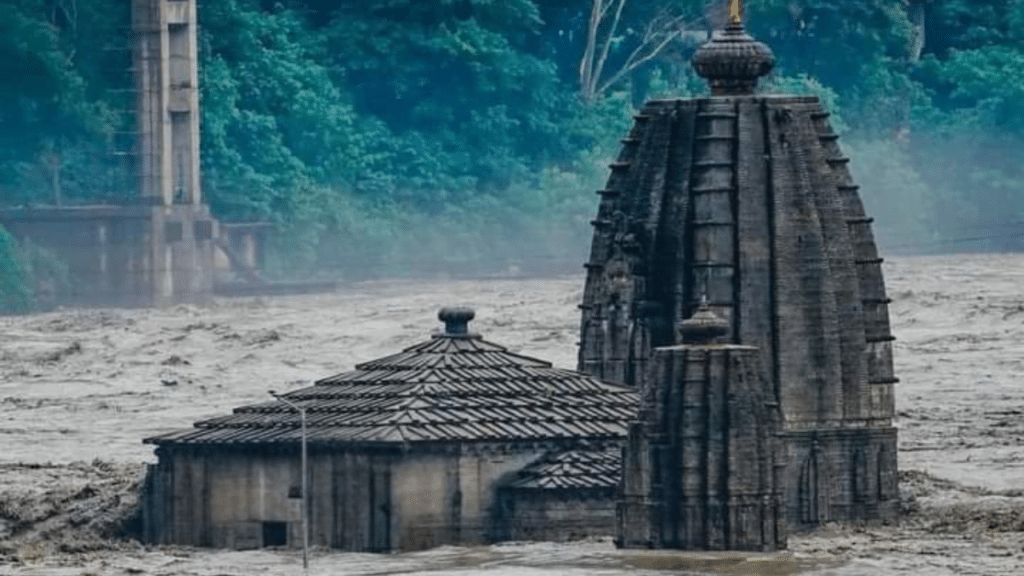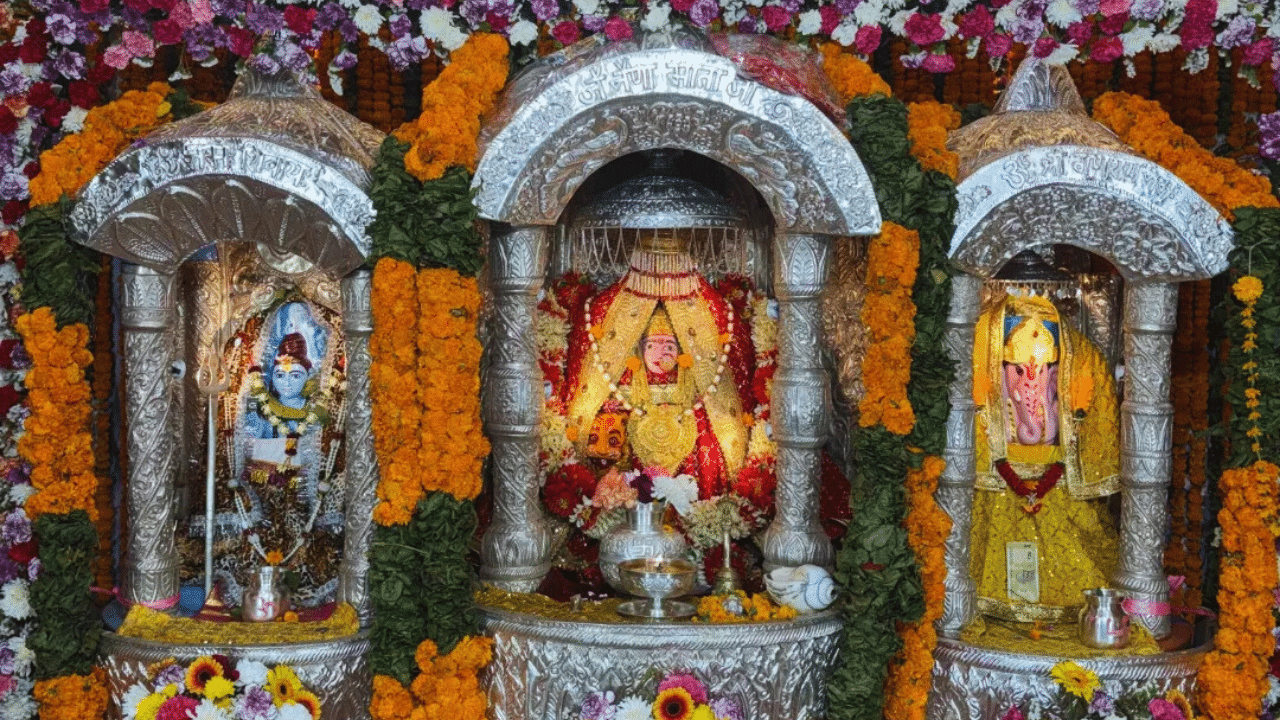Shiva is known in several forms. The commonest of these (whose temple is on the left side of the Beds) is that of PanchaVaktra or five-faced Shiva. The three-faced Shiva is known as Trilok Nath, his temple is on the right side of the river.
Table of Contents
History of Panchavaktra temple
At the confluence of the Beas River and Suketi River is a stately Sikhara temple evidently of considerable age and dedicated to Shiva under the name of Panchavaktra (the five-faced one). The main porch or mandap is supported on four heavy pillars, the capitals of which are carved in flower-pot design and the bases in rosettes or lotuses.

The main image is of some interest since the five faces are not placed in one row as is usually the case with polycephalic statues, but in such a way that the fourth face is on the reverse side of the slab which is otherwise quite plain and the fifth on the top of the image slab. Thus, when seen in front, only three faces are visible. The number of arms is ten. Such images of the five-faced Shiva are not uncommon in Mandi, and since their attributes bear a definite resemblance to those of Avaloketeshwara, it has been surmised that they owe their origin to Buddhism.
Normal Style of Architecture
Of the ancient temples of Mandi town, it may be said in general that the architecture is good. They are chiefly in stone and the style of Sikhara temples of the plains. They consist of a célla, surmounted by a spire and a porch usually decorated with carvings. The spire is of the usual type. In sanctuaries of a comparatively later time, however, it assumes the form of a dome, in consequence of which they appear more like mosques than Hindu temples. The larger and more important temples are also furnished with an anteroom or mandap.

The particular feature that distinguishes them from the temples of the adjoining States is the trefoil arch which generally decorates the facade or porch. It chiefly rests on the capital of the pillars or pilasters supporting the arch which are usually fluted: The brackets are often shaped as human figurines, seated on the head of an elephant and holding the trunk in their hands. The corners are sometimes ornamented with the figures of celestial musicians or gandharvas, and the whole combination produces a very pleasing effect.
Conclusion
Source: Gazetteer of the Mandi State




